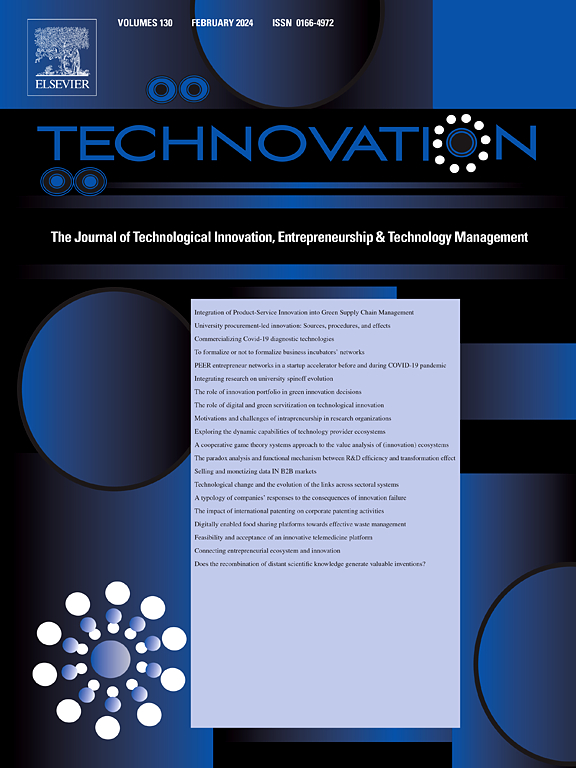探索人工智能在可持续发展中的作用。AI专利的语义分析
IF 10.9
1区 管理学
Q1 ENGINEERING, INDUSTRIAL
引用次数: 0
摘要
人工智能(AI)越来越被认为是可持续发展的变革性推动者。本文提供了一个新颖的贡献,通过使用可持续发展目标(SDGs)作为可持续发展的可靠功能代理,系统地绘制了人工智能相关技术的景观。我们实现了一个改进的术语频率-逆文档频率(TF-IDF)加权Word2Vec模型,结合基于双字母的过滤策略,以捕捉人工智能专利对可持续发展目标主题领域的细微贡献。我们的研究结果揭示了人工智能影响的广度和深度,证实了其作为一种能够推动跨部门系统性变革的通用技术的地位。通过揭示人工智能与可持续发展之间的相互联系,本研究有助于关于数字化和可持续转型的理论辩论,并为管理者和政策制定者提供实用见解,旨在有效管理这些范式转变。最后,我们的工作提出了一个数据驱动的框架,用于跟踪以可持续为导向的人工智能演变,同时指导政策设计,以支持2030年议程目标。本文章由计算机程序翻译,如有差异,请以英文原文为准。
Exploring the role of artificial intelligence in addressing sustainable development. A semantic analysis of AI patents
Artificial Intelligence (AI) is increasingly recognized as a transformative enabler of sustainable development. This paper offers a novel contribution by systematically mapping the landscape of AI-related technologies using Sustainable Development Goals (SDGs) as a reliable functional proxy of sustainable development. We implement an improved Term Frequency-Inverse Document Frequency (TF-IDF) weighted Word2Vec model, combined with a bigram-based filtering strategy, to capture the nuanced contribution of AI patents to SDGs thematic areas. Our results reveal both the breadth and depth of AI's impact, confirming its status of a general-purpose technology capable of driving cross-sectoral systemic transformations. By uncovering the interconnections between AI and sustainable development, this study contributes to the theoretical debate about digital and sustainable transitions and delivers practical insights for managers and policymakers, aiming to effectively manage these paradigm shifts. Finally, our work proposes a data-driven framework for tracking the evolution of sustainable-oriented AI evolutions while guiding policy design in support of Agenda (2030) goals.
求助全文
通过发布文献求助,成功后即可免费获取论文全文。
去求助
来源期刊

Technovation
管理科学-工程:工业
CiteScore
15.10
自引率
11.20%
发文量
208
审稿时长
91 days
期刊介绍:
The interdisciplinary journal Technovation covers various aspects of technological innovation, exploring processes, products, and social impacts. It examines innovation in both process and product realms, including social innovations like regulatory frameworks and non-economic benefits. Topics range from emerging trends and capital for development to managing technology-intensive ventures and innovation in organizations of different sizes. It also discusses organizational structures, investment strategies for science and technology enterprises, and the roles of technological innovators. Additionally, it addresses technology transfer between developing countries and innovation across enterprise, political, and economic systems.
 求助内容:
求助内容: 应助结果提醒方式:
应助结果提醒方式:


